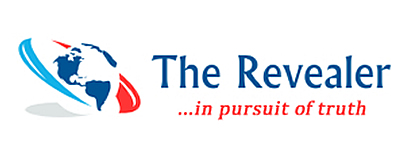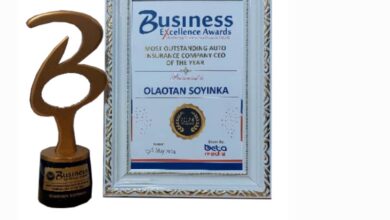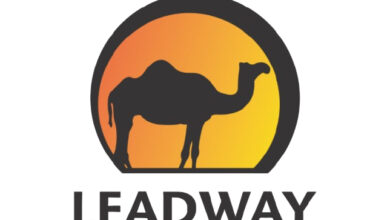Highlighting Insurance Market Performance For Q4 2022

Mr. Olorundare Sunday Thomas, Commissioner for Insurance/CEO, NAICOM
The Nigerian insurance industry regulator, the National Insurance Commission (NAICOM) has released its quarterly Market performance report for the fourth quarter of 2022.
Statistics of the insurance market performance for the period under review, according to NAICOM, revealed consistent growth in terms of premium generation, quality improvements in essential indicators including claims settlement and profitability.
It stated that “It is obvious that the market could be ruled as sound and stable whilst, the stance of the market deepening remains optimistic in spite of operational and macro-economic challenges.”
According to the report, the market recorded a remarkable gross premium generation growth of approximately thirty-six per cent quarter on quarter (QoQ), translated to about N726.2 billion.
Equally, as the industry crossed a seven hundred billion mark of premiums generated, the industry Statistics also revealed the continued improvement in retention propensity and, increased market size and profitability, comparative to the prior quarter.
Gross Premium Income
The gross premium income generated as at the fourth quarter of 2022 stood at N726.2billion, representing a growth proportion of about thirty-Six per cent (36.3%), quarter on quarter and indeed, about eighteen per cent (17.8%) year on year. This is a remarkable situation compared to the real growth (3.5%) of Gross Domestic Product (GDP) over the same period and, is attributable to consistent regulatory measures being carried out by the Commission.
Insight into the relative contribution of each class of business showing the comparative market drivers during the quarter, showed a sustained relevance of Life Insurance business in the industry compared to any single class in the non-life segment of the market.
Non-Life business as in the prior periods, continued its dominance, contributing about fifty-eight (57.4%) per cent relative to the share of the Life business (42.6%), keeping about same position in prior period. The proportional significance of Life in the industry was sustained a positive course in recent times reflective of the consumer’s confidence and awareness.
In-depth analysis of the Non-Life segment of market shows Oil & Gas business sustaining its market share dominance at 30.25%, increasing by two point (2.4%) compared to the previous quarter. The figure posted by Fire Insurance came a distant second (22.2%) maintaining same pattern of contribution to the gross premium pool of the market while Motor Insurance (14.9%),
Marine & Aviation (12.2%), General Accident (11.1%) and Miscellaneous (9.5%) followed in that order. On the other hand, Life business was driven by Individual Life portfolio (38.6%) even as
its relative contribution fell by about (2.6%) compared to third quarter (41.6%). In a contrasting path to the previous quarter, group life followed by about thirty-five (34.5%) per cent while Annuity business contributed gross premium income of about twenty-seven (26.9%) per cent during the period.
The actual percentage share of various classes remains the same to a large extent, relative to the respective contributions recorded in the previous period.
Industry data showed that individual life which contributed a large chunk of all premiums generated is the driving force behind the growth in the life segment closely followed by the group life portion of that corner of the market with significant improvement recorded from 27% in the prior period to 38.6% in the current.
Premium Retention Capacity
In the face of operational challenges posed in domestic and global economies, the industry continues to post inspiring numbers in business retention, reflective of the market resilience and increasing capacity. In the period under review, industry wide average retention ratio stood at about seventy-one per cent (71.3%), although, slightly a point lower than it held in the previous quarter and four points lower in comparison to same period (YoY).
Persistently, the Life business retained about the same point of ninety-three (93.3%) from its prior position of 93.8% in quarter three.
In the Non-Life segment which also took a similar pattern, Motor Insurance continued its lead as the highest retaining portfolio with a retention ratio of about ninety-four per cent (93.5%) also a point higher than its standing in the prior quarter. Oil & Gas recorded the least at about thirty- six per cent (35.9%). The oil and Gas portfolio lamentably remained a challenging angle in the market owing to its nature of enormous capital and professional requirements. Consequently, the retention performance in the current period sustained its prior position when compared to the third quarter as evidenced by the overall Non-Life business ratio of fifty-five per cent (55.0%), slipping from about fifty-seven per cent (56.6%) held in the prior period.
Data showed that insurance premium retention of the market remains robust, above average and healthy except in the Oil & Gas business, as well as for the Non-Life part of the industry. The same is also true for the Life Insurance business during the period under review.
As reported, the total Retention Ratios of Various Classes of Non-Life for Q4, 2022 was 55.0, broken into – Motor (94.0), Fire (52.3), Gen. Accident (66.4), Marine & Aviation (55.7), Oil &Gas (35.0), and Miscellaneous Insurance (51.8).
Insurance Claims Component
The Insurance Claims reported during the fourth quarter stood at N318.2billion representing a thirty-one (31.2%) per cent QoQ growth. Possible attainment as a result of growing awareness and Market expansion as well as consumer’s confidence. In a similar pattern, the net claims paid were reported at N244.3billion, growing at about eighteen per cent (17.9%) QoQ during the same period.
Insights into the Non-life segment shows that Motor Insurance led with regards to claims settlement vis a vis gross claims reported at about ninty-two (92.3%) per cent signifying a nine points improvement as against its prior position. Fire Insurance was the least at about forty-six per cent (46.3%), the only class below average proportion. All other portfolios of General Accident Insurance (80.7%), Oil & Gas (51.6%), Marine & Aviation (74.4%), miscellaneous Insurances (86.1%) recorded a proportion above the average, of paid claims against gross claims reported. Life Insurance business on the other hand reported two points less in comparison to the position held in the prior period of ninety-five (94.6%) per cent of net claims paid compared to total claims reported during the same period of 2021.
The data reveals an impressive development with regards to claims settlement in the non-life business with a record of about sixty-four (63.7%) per cent compared to the previous period (46.9%). It therefore, indicates that despite operational challenges, the claims settlement experience of Insurers is improving.
The percentage of net claims paid against total claims reported with respect to non-life classes for the period under review shows that Motor was 92.3, Fire 46.3, General Acciden 80.7, Marine & Aviation 74.4, Oil & Gas 51.6, and Miscellaneous Insurances 21.7.
Profitability of the Sector
The market recorded about forty-seven (47.2%) per cent net loss ratio during the period under review, suggestive of a workable, cost effective and profitable business in the industry. This is mostly attributable to the Life business sustaining its positive course at 46.5% net loss ratio in the current period while the Non-Life portfolio recorded about 48.1% during the same period.
Comparatively, the market recorded an aggregate market average of 54.5% of net loss ratio in the previous period, hence depictive of an improved aggregate market desirability and profitability during the current period. Six companies with net loss ratios above 100 per cent as provided in table 4 were majorly responsible for the average industry loss registered for the period.
Market Concentration Risk
The market concentration landscape with regards to premium generation in the current period remained to a large extent similar to the prior period of third quarter whereby the top ten Insurers controls about sixty-one (60.8%) per cent of the market in the non-life segment, twenty- four of which was by the top three Insurers of this segment while just about one (1.3%) per cent of the market was shared by the bottom ten underwriters. Similarly, Life business on the other hand was controlled fifty-seven (57.1%) per cent by its top three underwriters while about eighty-four (83.8%) per cent of all gross premium generated in that portfolio was recorded for the top ten companies of that business. The least ten insurance companies operating life businesses during the same period held a proportional contribution of less than one (0.9%) per cent.
Comparatively, the Non-Life section has improved in terms of concentration effect, falling three points relative to its market share (64.2%) for the top ten in the previous quarter while no significant shift was recorded in the life business. In the overall analysis, the market maintained a fairly balanced concentration especially, in the Non-Life section of the industry which ultimately controls a major portion of the entire insurance market.
The Market Size
The total Assets of the Insurance industry stood at N2.33 trillion in the fourth quarter, sustaining a positive growth that signifies expansion at the rate of two (2.4%) per cent, (QoQ) and at 4.4 per cent (YoY). This is relatively at a lower momentum compared to the prior period when the progression rate was recorded at about nine per cent (YoY), attributable to the wave of recapitalization drive recorded in that period. However, the outlook of the market growth in terms of Assets remains positive, with the increasing measures of market deepening and development, recapitalization drive still ongoing, regulatory Insurance laws and provisions enshrined in the Insurance bill, being reviewed and, digitization of the supervisory wide processes would lead to the realization of the vast potentials in the insurance industry.
Insight into the Market size distribution with respect to Life and Non-Life Insurance businesses during the period showed Non-Life Insurance Business recording 1.12 trillion in total asset while Life Insurance Business asset stood at 1.21 trillion.
Statistics of the insurance market performance for the fourth quarter 2022 revealed consistent growth in terms of premium generation, quality improvements in essential indicators including claims settlement and profitability. It is obvious that the market could be ruled as sound and stable whilst, the stance of the market deepening remains optimistic in spite of operational and macro-economic challenges.





